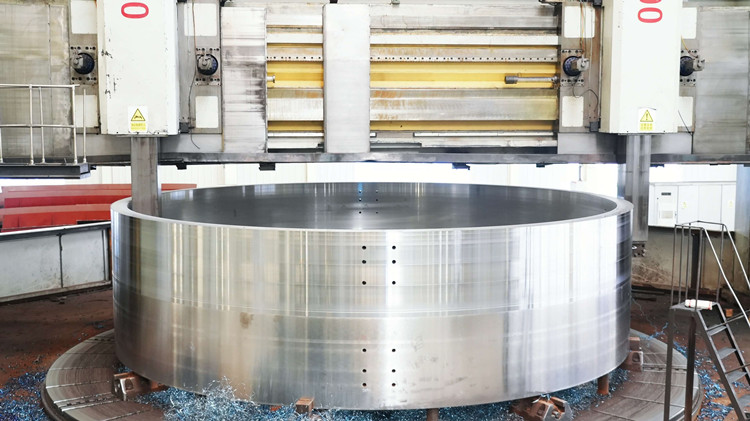- tyler@kirail.com
- +86 15603721115
Since stainless steel forgings are often used in key parts of machines, the internal quality of stainless steel forgings is very important. Since the internal quality of stainless steel forgings cannot be detected by intuitive methods, special physical and chemical inspection methods must be used for detection.
1. Mechanical properties of forgings
The mechanical properties of forgings are determined according to product requirements. The test methods are divided into hardness test, tensile test, impact test and fatigue test.
1) Hardness test Hardness is the ability of the material surface to resist deformation and is an indicator of the hardness of metal materials. There is a certain inherent connection between hardness and other mechanical properties, so other mechanical properties of materials can be estimated by hardness value. Hardness test does not require the preparation of special specimens and will not damage the specimens, so hardness test is the most commonly used mechanical property test method in production. Commonly used hardness test methods and different values are: Brinell hardness (HB), Rockwell hardness (HRC), Vickers hardness (HV), Shore hardness (HS), and corresponding hardness testers.
2) Tensile test A tensile load is applied to a sample of a certain shape through a tensile machine to measure the proportional elongation stress, yield point, tensile strength, elongation and cross-sectional shrinkage of the metal material.
3) Impact test A high-speed pendulum is used to impact a notched sample to obtain the impact toughness of the metal.
4) Fatigue test After the metal is subjected to repeated or alternating stress, its fatigue limit and fatigue strength can be measured.

2. Nondestructive testing of forgings
Nondestructive testing can be divided into radiographic testing, ultrasonic testing, magnetic particle testing, seepage testing and eddy current testing. Commonly used testing methods for forgings are ultrasonic testing and magnetic particle testing.
1) Ultrasonic testing
Ultrasonic waves (frequency is generally greater than 20,000 Hz) will reflect and refract at the interface of different materials. Therefore, if there are defects of different materials in the solid material, the reflection and attenuation of the wave will occur, and the existence of the defect can be judged by the waveform signal. For large and medium-sized forgings, ultrasonic testing is one of the important means of nondestructive testing.
2) Magnetic particle testing
Magnetic particle testing can be used to check for defects such as cracks, pores, non-metallic inclusions on the surface of forgings and nearby areas. Because this method has simple equipment, convenient operation and high sensitivity, it is often used to detect small and medium-sized die forgings produced in large quantities.
3. Low-power fracture test
Low-power inspection is to inspect the sample with the naked eye under a 10-30 times magnifying glass after a certain processing, so as to find the defects of stainless steel forgings. By cutting a disc sample and acid etching, defects such as streamlines, dendrites, looseness, naphthalene crystals, and stone grain fractures can be checked. In order to detect segregation, especially the uneven distribution of sulfides, the sulfur printing method is often used.
4. High-power inspection
The stainless steel forging is made into a certain sample and placed under a microscope to check the organizational state or microscopic defects inside the forging (or fracture). The internal organization and inclusion distribution of the forging can be checked by cutting a longitudinal sample. Surface defects such as decarburization, coarse grains, carburization and hardened layer can be checked by cutting a transverse sample.